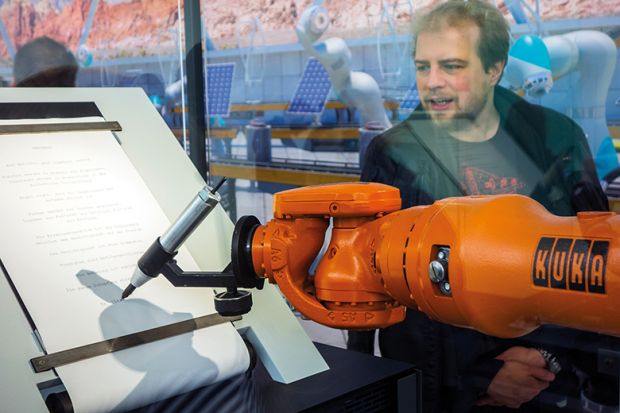Many graduate students in science and engineering maintain an attitude of “I am good at science and engineering, and all this humanities stuff is boring. I’d like to spend as little time and effort on it as possible.”
However, the reality is that they cannot become successful scientists or engineers if they are unable to write. Students may have the best scientific results or project ideas but if they cannot write a good report, their readers will not be able to grasp their meaning. Poor writing obscures their message – meaning that they will miss out on good marks and, eventually, future career success.
To make matters worse, curricula for science and engineering students are almost entirely focused on specialised subjects, with almost no place for teaching students how to prepare technical reports. Although the importance of technical writing has been discussed in some literature, these discussions almost never reach student audiences.
Most science students think that writing is simply writing up the results. In reality, writing is a way to organise their thoughts and is an integral part of the whole project. A scientific or technical report is not just a collection of figures with accompanying statements about how “I or we did this and this”.
Therefore, we have produced a paper in which we share with fellow lecturers and academics our experience of teaching science and engineering students basic writing skills, and provide clear guidelines for students to follow. Although we focused on students’ project reports, the principles discussed in the paper have much wider application: from laboratory reports to research papers.
To assist students, their teachers need to emphasise that a report must tell a story; and that students must first work out what that story is.
Beginning a new paper or report draft can be challenging, especially if it is a student’s first attempt.
Before they start writing, ask them to have at least tentative answers to the following questions:
- What are the questions that the report is trying to answer?
- What are the implications of this work compared with prior work?
- What is the evidence for the anticipated conclusions?
Students typically think that they know these answers but, when forced to articulate them, they usually find that they do not understand them as well as they thought. If, in the process of writing, they find that they are not able to address these questions, they must go back and carry out more analysis.
They should repeat this process until they are able to better address these questions. They may also find that their results lead to new questions or phenomena that they were not aware of at the beginning of the project. Thus, writing is a key part of the learning process.
Once students have a reasonable (although not final) answer to each of the above questions, they should devise a project outline. This outline should include the names of expected sections and subsections, with some notes on what exactly they will try to convey in each section. The outline sketches the story that they expect to tell the reader, although the details of the story will likely evolve over time.
Once students have created their outline, they can begin to prepare their first draft.
The introduction is the most difficult section for the students. Only by reading a large number of papers in their field can they learn what should be in their introductions. Indeed, like all writing, technical writing is best learned by reading.
By seeing several examples of how the story is told in these documents, from introduction to conclusion, students will be better equipped to tackle their own reports.
But the steps described here are just the beginning. Students must know they are expected to make many, many revisions to their draft, no matter how experienced they are. Indeed, the more seasoned a writer they become, the more editing they will find themselves doing. Experienced writers think about every single sentence in order to convey their meaning precisely.
Ultimately, for a student’s readers to understand what they mean, a student must first understand what they mean themselves. Teachers must help them get there.
Anna Sajina is an associate professor of astrophysics at Tufts University and Sergei Sazhin is professor of thermal physics at the University of Brighton.
POSTSCRIPT:
Print headline: Teach them how to tell a good story
Register to continue
Why register?
- Registration is free and only takes a moment
- Once registered, you can read 3 articles a month
- Sign up for our newsletter
Subscribe
Or subscribe for unlimited access to:
- Unlimited access to news, views, insights & reviews
- Digital editions
- Digital access to THE’s university and college rankings analysis
Already registered or a current subscriber? Login






